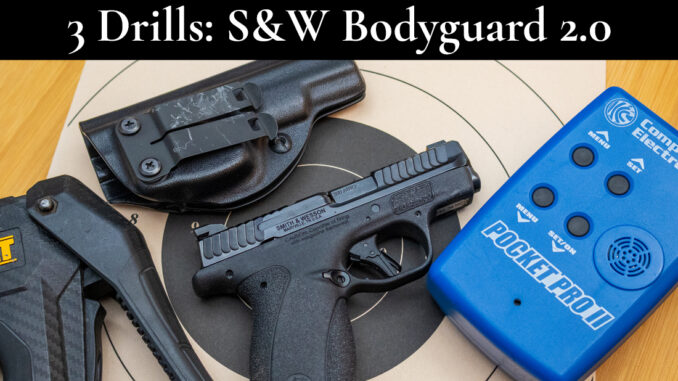
Through my testing here at Primer Peak and the videos I make on YouTube, I shoot a lot. I’m not a trash-shooter though, and like to use those rounds for testing in a practical manner. That means shooting a lot of drills, and in this new series, I wanted to share 3 drills that I’ve recently shot with a specific firearm. We cover a lot of drills here at Primer Peak, and I’ll link out to the articles on the ones that I cover here.
For the first entry, I’ll be talking about the Smith & Wesson Bodyguard 2.0. I’ve put a lot of time, effort, energy, and money into this gun since my initial impressions in 2024, and with that comes a lot of shooting drills. Let’s talk about the gun a little bit, and then hop into the drills.
The Smith & Wesson Bodyguard 2.0 & Shooting Gear
I’ve done quite a bit of work to the Bodyguard 2.0, but basically none of it was in the endeavor to make it shoot better, but rather to make it work. The gun had a trip back to S&W in Fall 2024 to have the defective feed ramp fixed. I also modified my 12 round magazine to actually hold 12 rounds. In Spring 2025, I installed the (lackluster) XS R3D sights to the pistol. The R3Ds are more precise than the OEM sights, but are still too coarse, even on a small gun like the BG 2.0.
Aside from the work specified above, the gun is internally stock. I’ve not done any work to change how the trigger feels, or to stipple the frame. I shot these drills from the JMCK AIWB holster, and primarily used the 10 round OEM mags. For ammo, I used a combination of normal FMJ ball rounds, and some Hornady XTPs that I was cycling out of my carry rotation. My shot timer is the classic Competition Electronics Pocket Pro 2.
Let’s hop right into the drills!
The Drills
The three drills are classics, and ones that we’ve covered here at Primer Peak.
- The Vickers Test
- The Werner 5×5
- Hardwired Tactical Snubby Super Test
For these drills, you can either shoot them from low ready, or from the holster. I like to get extra drawstrokes in, so I shot all of them from the holster. The targets used are also quite easy to print, and are the B8 repair center, and a 5″ circle.
Link to the printable B8 (make sure to set printer scaling to 100%, not “fit to page”).
Link to the printable 5″ circle (make sure to set printer scaling to 100%, not “fit to page”).
Let’s start with the first drill, and one of my favorites.
The Vickers Test
The Vickers Test is a drill that I have shot a lot over the years. It was my first article for Primer Peak, and earlier this year, I wrote a remastered edition of it. It’s a simple drill to give you a benchmark, and that’s why I think I like it.
The Test is a pretty simple drill to set up.
The Test Instructions (Designed by Larry Vickers, modified scoring variant done by Ken Hackathorn)
- Necessary Gear: Quality handgun, with a holster being optional.
- Target: NRA B8 repair center
- Distance: 10 yards.
- Par Time: 10 second par time. Alternatively, if shooter is using a firearm with a capacity less than 10 rounds, par time is equal to capacity of the gun.
- Start Position: Shooter begins with gun loaded with 10 rounds (or max capacity of firearm), positioned at low ready.
- Round Count: 10 rounds, or if the firearm is under 10 rounds, maximum capacity of firearm.
- Course of Fire: On beep, shooter raises their firearm, and shoots 10 rounds into the B8 target. If their gun has a capacity of less than 10 rounds, they shoot that amount of rounds.
- Scoring: Scoring can be done via two ways, either with a passing score of 90 points or higher, or a pass being that all rounds land in the black of the B8. Par time cannot be exceeded to pass either.
- Advanced Version: Shooter begins with their gun loaded, and holstered. The drill is the same, except shooter must draw and engage B8 now. Par time and scoring conditions are unchanged.
How was my run of The Test?
Post-Drill Thoughts
I’m content with my performance on The Test with the BG 2.0. I would like to bring the score up a few points, but these sights really aren’t helping much with that. Couple in that the BG 2.0 has pretty weak lockup, and accuracy at double digit ranges is lacking. That said, I’ll take what I did here.
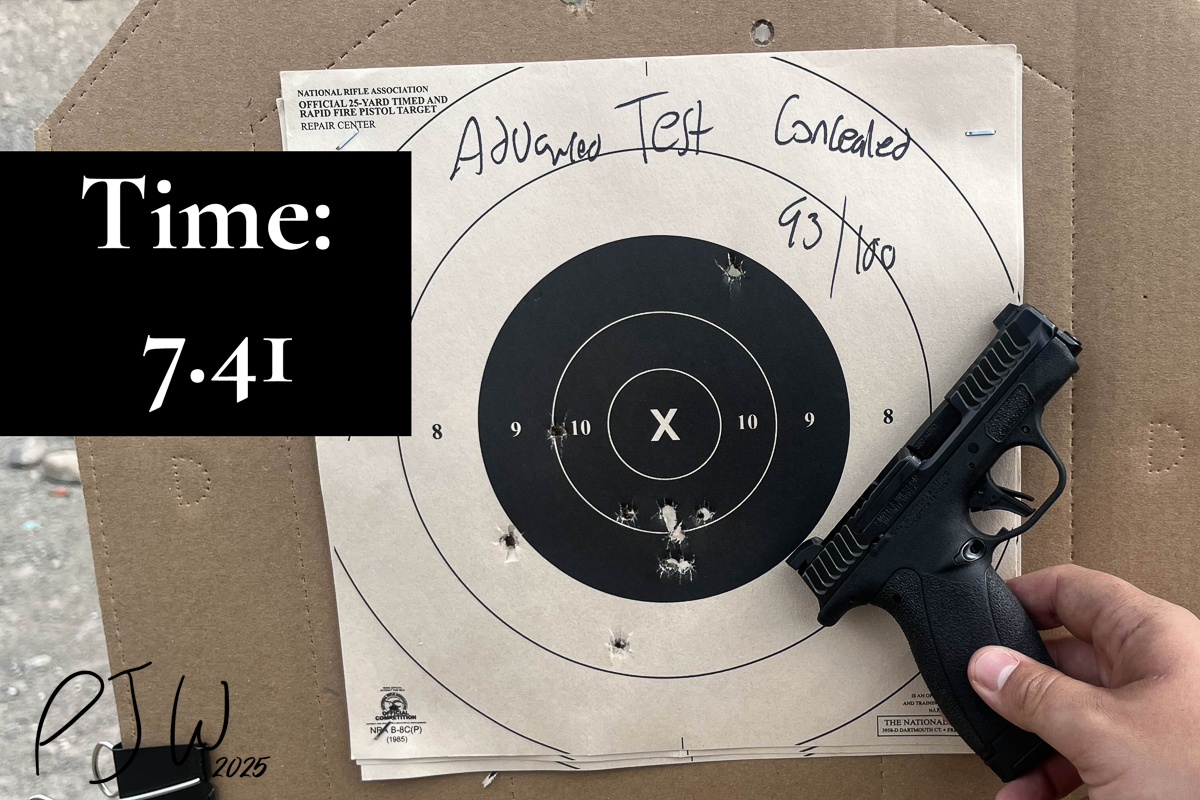
How about the next drill?
The Werner 5×5
The Werner 5×5 is a drill that is deceptively hard. It seems easy when you look it from a distance, but the need to have 5 clean strings of fire makes a lot of folks get nerves, and fail near the end.
Werner 5×5 Instructions
- Necessary Gear: Shot timer, handgun, & holster (advanced version only).
- Target: 5 inch target.
- Distance: 5 yards.
- Par Time: 5 seconds.
- Start Position: Low ready, or holstered (if shooting the advanced version).
- Round Count: 25 rounds total, in 5 strings of fire.
- Strings of fire: 5 strings of fire, with 5 rounds in each string.
- Course of Fire: Shooter is to start at low ready, and on beep, raise gun, and fire 5 rounds into the target. This is repeated 5 times. If shooting the advanced version, shooter begins with gun holstered, draws on beep, and fires 5 rounds.
- Pass Condition: Completing all 5 strings of fire with clean shooting, and under par time each time.
Did I show up and perform with the BG 2.0, or did I flop over these 5 strings of fire?
Post-Drill Thoughts
The run of the Werner 5×5 with the BG 2.0 was honestly pretty easy. The 5″ target is somewhat forgiving at this distance, and I cleared most of my strings with a lot of time to spare. That said, needing to repeat that performance adds a little stress, and more (good) stress while shooting drills is a good thing.
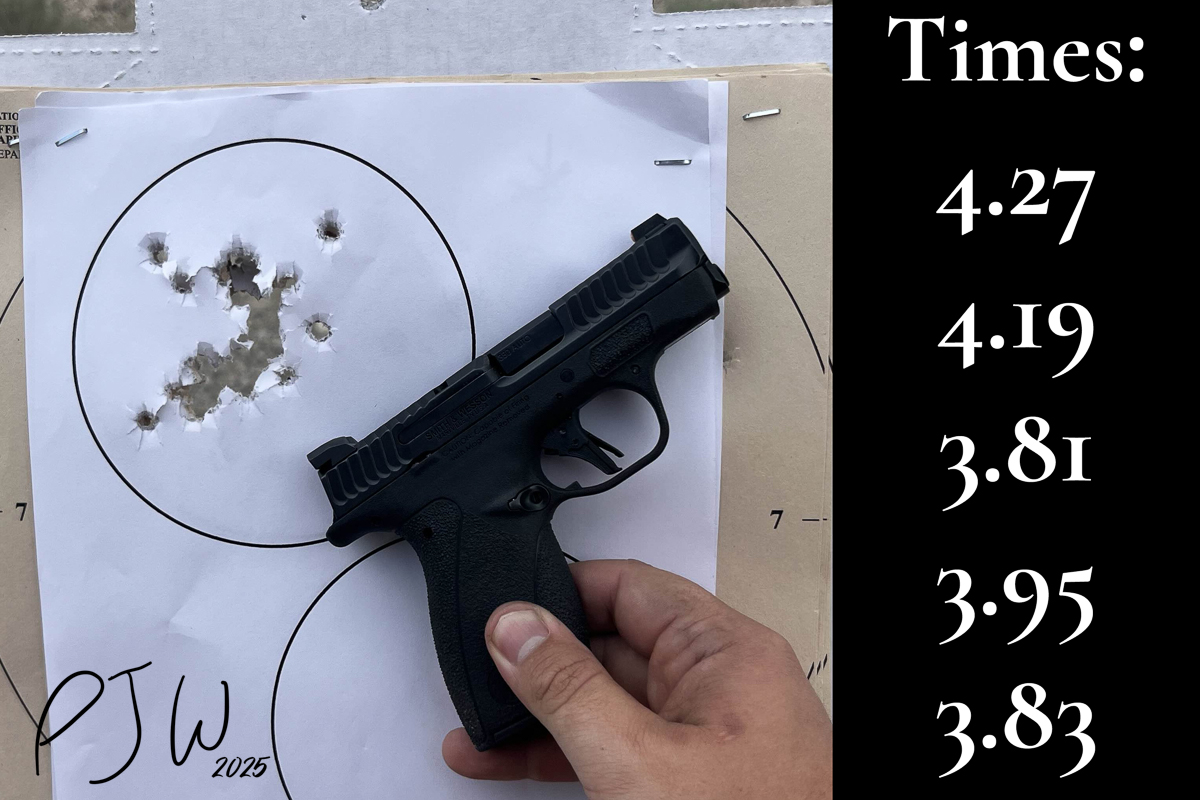
Let’s move on to the last drill.
Hardwired Tactical Super Snubby Test
The Hardwired Tactical Super Snubby Test is a favorite of Dan and I, and is a revolver drill. However, I like to shoot it with smaller autoloaders, as I carry them in the same instances where I may pack a wheelgun.
Hardwired Tactical Super Snubby Test
- Necessary Gear: Shot timer, handgun, & holster (advanced version only).
- Target: B8 Repair Center
- Distances: 10, 5, & 3 yards
- Par Time: 8 seconds at 10 yards, 5 seconds at 5 yards, and 3.5 seconds at 3 yards
- Start Position: Low ready, or holstered (if shooting the advanced version).
- Round Count: 15 rounds total.
- Strings of fire: 3 strings of fire, with 5 rounds in each string.
- Course of Fire: 3 strings of fire, which go as follows –
- String 1: Begin at 10 yards, at low ready, two hands on gun. On beep, raise gun and shoot 5 rounds into B8.
- String 2: Begin at 5 yards, at low ready, two hands on gun. On beep, raise gun and shoot 5 rounds into B8.
- String 3: Begin at 3 yards, at low ready, STRONG HAND ONLY on gun. On beep, raise gun and shoot 5 rounds into B8.
- For the advanced version, the strings of fire are the same, however, you begin with your gun holstered, and can use two hands on the gun for String 3. If shooting from IWB/OWB, start with hands by your side. If shooting from the pocket, begin with hand on the gun in the pocket.
- Pass Condition: Minimum passing score of 90% hit (135), and under par time each time.
As a note, I shot the Advanced version, so I got to have two hands on the gun for each string of fire. Let’s roll the footage.
Post-Drill Thoughts
I’ve been a big fan of the SST since I started shooting it in 2023, and I’m happy with my performance here. The drill works in some medium and short range shooting, and it has an accuracy focus that I like to see. The par times are fair, and when shooting from the holster, you’ve gotta be quick on the draw. I think that the BG 2.0 performed well here too.
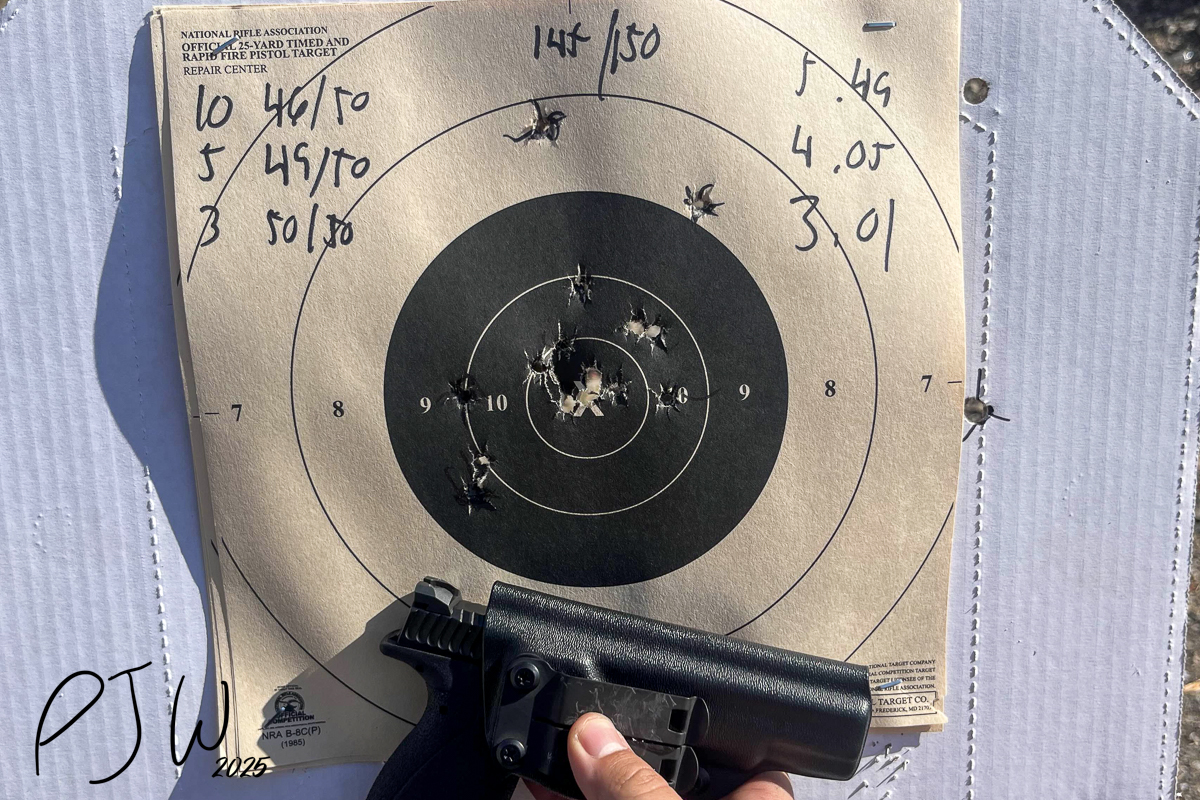
Overall, I’m happy with my performance with these drills. There’s certainly room for improvement, but I’m content for now. What are my overall thoughts of the BG 2.0 when used for shooting drills?
Bodyguard 2.0 Drill Thoughts
The Bodyguard 2.0 is not an easy gun to shoot well, but it’s not that hard either. I do find that I really need to focus on my grip with this gun, and I think that’s due to the thin frame. It’s very easy to apply too much force with the firing hand, and pull the gun to the opposite side. The XS sights were improvement in the accuracy department over the OEMs too, which helped to bring up my scores as the distances increased.
My times and scores were solid on these drills, even with the grip-related focus that was necessary. When it comes to small guns, there’s only one that I’m shooting better than the BG 2.0, and that’s the Glock 42. The G42 is just in a league of its own for the shooting characteristics for these small guns. Maybe that gun will show up in a future installment…
As for the holster, the JMCK AIWB performed great as always. The sights were also fine, but I’d like to replace these XS R3Ds with something more precise, like the Ameriglo BG sights (but those aren’t available yet).
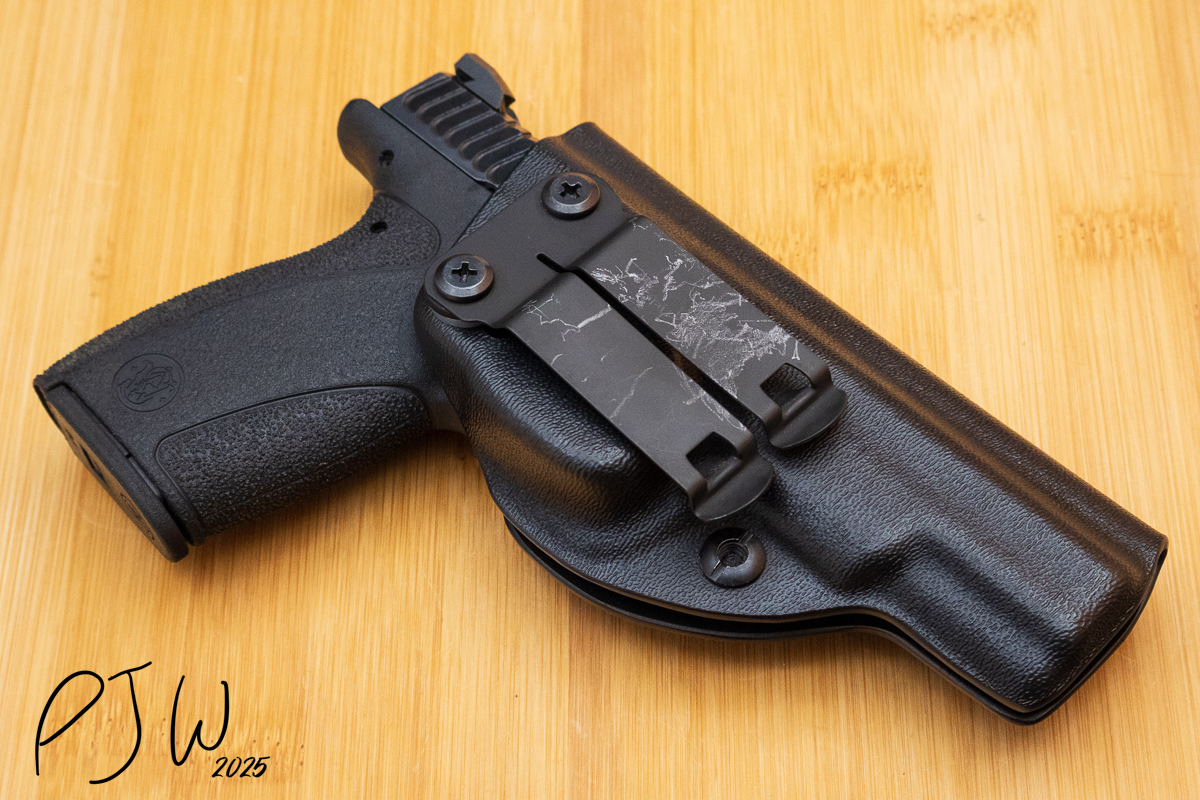
As for reliability, well, it was kind of hit or miss. I had no failures to feed, failures to go into battery, or failures to extract. However, I had many, many failures to lock open, mostly with the 12 round mags. I carry the gun with the 10 rounder in there, so I do most of my shooting with them. The 12s are my reload, and I’ve found that the slide stop lobe has actually worn on my followers a bit, and the 12 round mags won’t lock open on empty. Hell, they won’t lock open at all, unless I push on the bottom of the mag. The 10s seem to be spring a little stronger (but not too much like the OG 12 rounder I had), and those always seem to lock open on empty.
All-in-all, I’m happy with the performance of the BG 2.0 now. I wasn’t happy a year ago when the gun didn’t work, but I’ll save all of the gripes and fixes when the review comes out later this year.
The Verdict
It is extremely important for you to practice with your carry gun. I’ve got articles and videos about this topic all throughout my portfolio, but it needs to be said. You should be spending a lot of shooting time with the guns that you actually carry. I’ve been shooting guns like the BG 2.0, Glock 43x & G48, and various small revolvers a lot over the last few years, as they are the actual guns that I carry.
I’d recommend giving these 3 drills a try with your BG 2.0, or whatever gun you carry. The Test can be modified to work with basically anything, and the other two drills are already lower-capacity friendly. If you do shoot your BG 2.0 practically, what drills do you like? Let us know in the comments down below!
Video Work
The “3 Drills” series originally started on my YT channel, but I wanted to share it in written form too. If you want to check out the full channel, click this link!
Additional Reading & Patreon Link, & Thanks
Drills and building proficiency are important, and selecting a good carry gun is paramount too. Check out the following reviews from us here at Primer Peak:
- Glock 48 Review [2024]
- Colt Viper Review [2025]
- Beretta PX4 Compact Carry Review [2025]
- Taurus 692 Executive Grade Long-Term Review [2025]
If you’d like to support me on Patreon, I’ve got the link for that here. Nearly everything that I do on Primer Peak is paid for out of my own pocket, and my content is not shilled or driven by manufacturers or companies. If you decide to donate, I’d really appreciate it, as it would allow for me to continue to bring you quality work.
I’d like to thank my YouTube channel members, channel donors, and Patrons too. Your support allows me to make more works, and to do it without the hand of a company pushing me!


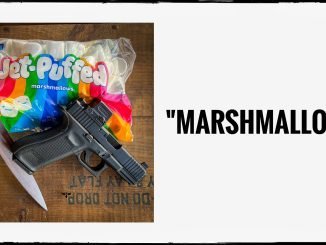
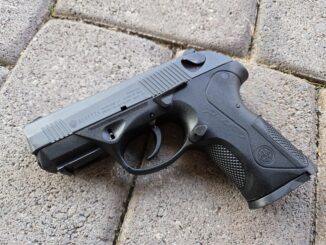

Be the first to comment